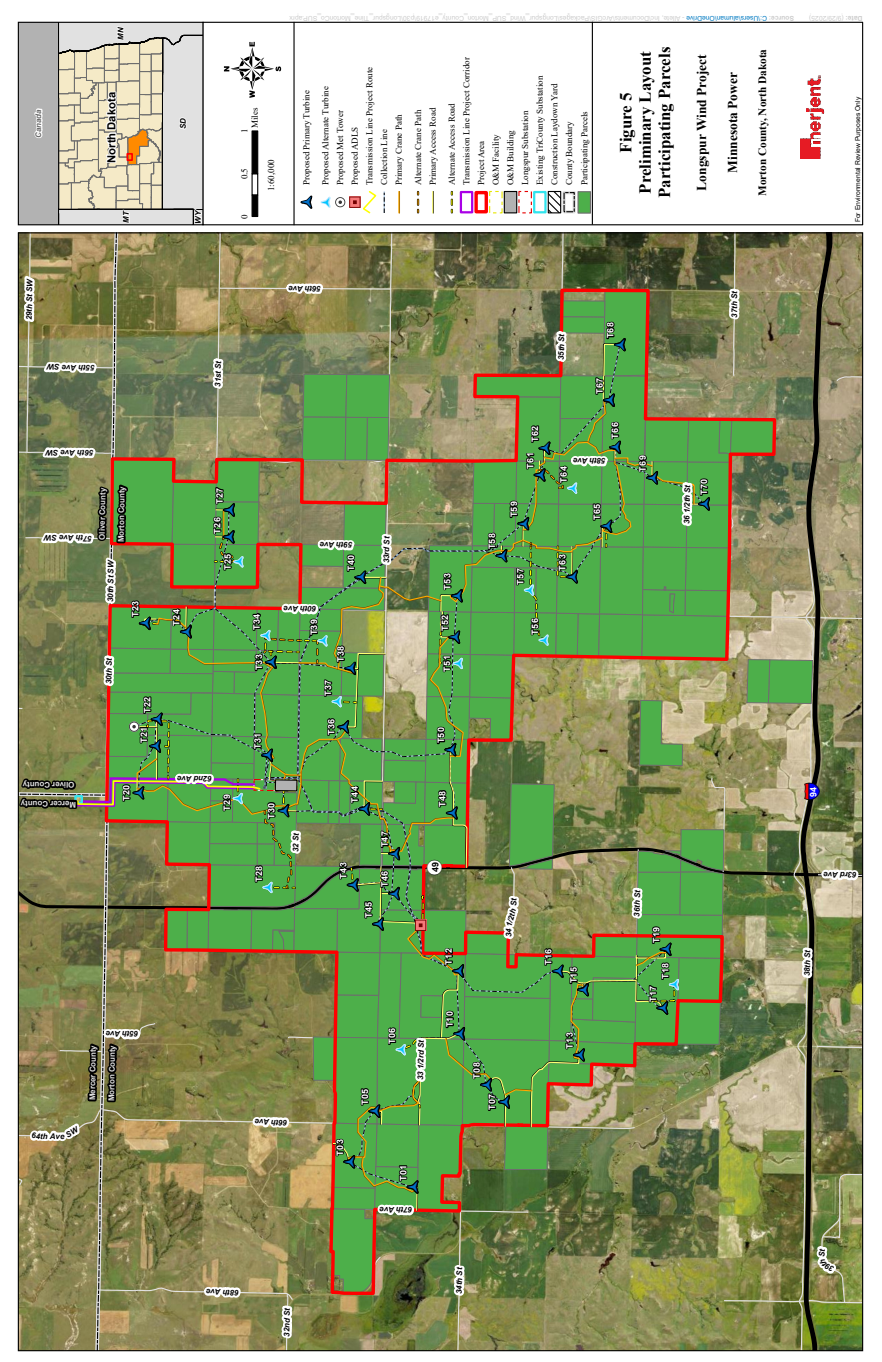Morton County, ND to Review Minnesota Power's 22,000 Acre Wind Turbine Project Tonight!
The Longspur Wind Project, a planned 202.5-megawatt (MW) wind energy facility proposed by Minnesota Power, is advancing through North Dakota’s permitting process while encountering resistance from local planning officials concerned about safety and land-use compatibility.
Developer and Project Scope
The project is wholly owned by Minnesota Power, an investor-owned utility based in Duluth, Minnesota, which serves a 1,600 MW peak demand system and operates a portfolio of renewable energy assets, including existing wind facilities in North Dakota.
Prepared in September 2025 by Merjent, Inc., the Special Use Permit (SUP) application outlines plans for a large-scale installation covering roughly 26,000 to 26,100 acres north and northeast of Glen Ullin, extending toward the Oliver–Mercer County line.
The project calls for up to 45 primary turbines and 12 alternative sites, each potentially reaching 638 feet in total height. Supporting infrastructure would include the Longspur Substation, underground electrical collection lines, an operations and maintenance (O&M) facility, laydown yard, ADLS radar tower, and a permanent meteorological tower.
A 230-kilovolt (kV) transmission line, extending 2.3 miles (2.0 miles within Morton County), would connect the project to the Tri-County 230 kV substation in neighboring Mercer County.
Timeline and Permitting Milestones
| Date/Timeframe | Milestone/Event |
|---|---|
| September 2025 | Special Use Permit (SUP) application submitted. |
| October 22, 2025 | Public hearing before the Morton County Planning & Zoning Commission. |
| October 28, 2025 | Scheduled for consideration by the Morton County Commission. |
| Q4 2025 | Applications to be filed with the North Dakota Public Service Commission (PSC) for Site and Corridor Compatibility Certificates. |
| Q3 2026 (earliest) | Anticipated start of construction, pending approvals. |
| ~1 Year Duration | Estimated construction period, including turbine assembly, road, and electrical work. |
| Q3–Q4 2027 | Testing operations expected to begin. |
| Q4 2027 | Target for full commercial operation. |
Regulatory Opposition and Concerns
Despite staff support for approval with conditions, the Morton County Planning & Zoning Commission voted 6–2 (with one member absent) to recommend denial of the project’s Special Use Permit.
Key objections cited by commissioners included:
-
Resident well-being: Local testimony argued the turbines would be “detrimental to their well-being.”
-
Safety validation: Officials said the applicant had “not researched enough to validate that the use is safe.”
-
Comprehensive Plan conflict: The proposal was deemed inconsistent with the county’s goals to preserve agricultural land and maintain rural character and scenic integrity.
Developer’s Response
Minnesota Power maintains that the Longspur project aligns with Morton County’s 2045 Comprehensive Plan, asserting that the development will deliver economic, agricultural, and environmental benefits:
-
Economic Impact: The project is expected to generate long-term tax revenue and lease payments supporting landowners, school districts, and local governments.
-
Agricultural Compatibility: The turbines would coexist with existing land use, allowing landowners to retain active agricultural operations while earning additional income.
-
Environmental Safeguards: The facility is sited in a low-density agricultural zone, designed to avoid interference with water resources or air quality, and to comply with 45 dBA noise limits and shadow flicker standards (no more than 30 hours annually at occupied residences).
The developer has also requested:
-
A variance from the county’s transmission line setback requirement, aligning instead with PSC standards.
-
Application of state decommissioning rules, which allow up to 24 months for turbine removal following project closure, instead of the county’s six-month limit.
Staff-Recommended Conditions
If the Board of County Commissioners opts to approve the project, staff recommended several key conditions:
-
Prohibit turbine placement within Residential zoning districts.
-
Require letters of acknowledgment from easement holders (including pipeline operators) within the project boundary, submitted at least 90 days before construction.
-
Ensure all lighting is shielded downward, unless otherwise required by regulatory authorities.
-
Mandate a road use agreement approved by the County Engineer prior to construction commencement.
